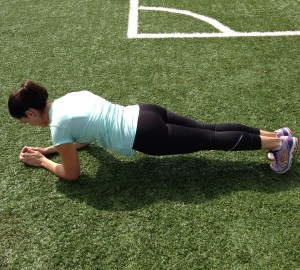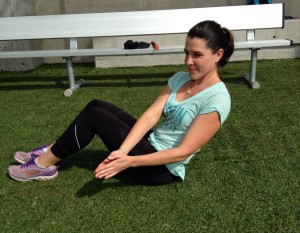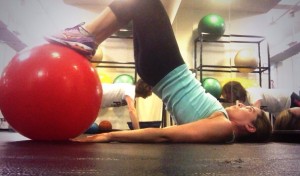I AM NOT A DOCTOR.
The amount of times I am asked about how to treat a chronic pain, (most likely induced by over-exercising), astounds me. It’s also a little humbling, as it makes me realize how much people trust me with their bodies.
Here’s a typical conversation I’ll have with someone who approaches me in the gym or after a class:
Exerciser: Hey Amy, for a few weeks, I’ve had this pain in my shoulder every time I bench press, and it’s not getting any better.
Me: You’ve been in pain for a few weeks, and you’re still working out?
Exerciser: Of course!
Me: Have you been to the doctor? You may need an MRI…at the very least it’s best to stop bench pressing until you can get a doctor’s appointment…
Exerciser: Oh no, I can’t stop benching!
Me:
If you are in chronic pain, and you continue the activity which causes that specific pain, be prepared to pay the price, which could include prolonged periods of rest and possibly surgery.
As a personal trainer I am qualified to create a workout plan for you, demonstrate and supervise you performing said workout plan, suggest some dietary adjustments to optimize your workout plan, and tag you in Instagram videos of people doing ridiculous exercises like this:
But I will not, at any time, attempt to treat a medical condition or injury without you first consulting a doctor. Any trainer or instructor who dispenses medical advice, or attempts to treat a medical condition or injury, is operating out of their scope of practice and is behaving irresponsibly.
There are some trainers out there with some very advanced degrees that may include physical therapy. But even they can’t see what’s going on inside of you if you haven’t had an X-ray or MRI. So if something has been bothering you for a while, go get one, ok? As someone who has spent over 10 weeks in a walking boot due to an ignored pain in her foot, I can tell you this much: a little early detection goes a long a way.
 Perhaps a quick visit to the doctor before running my 8th half marathon would have kept me out of this beauty.
Perhaps a quick visit to the doctor before running my 8th half marathon would have kept me out of this beauty.
This also goes for the dispensing of nutrition plans. Believe it or not, your personal trainer–unless they have attained a higher degree in dietetics–is not qualified to put you on a diet. We can suggest ways in which you can make your diet more nutritious, and can help you to devise methods of calorie imbalance that may either gain or lose you weight, but this does not include putting you on a specific plan like paleo, vegetarianism, etc.
It should be obvious that this also goes for anyone out there giving out (0r in some cases selling) diet plans. But just in case, you should be aware that the following are NOT QUALIFIED to put you on a diet:
- Celebrity “Trainers”
- The celebrities themselves
- Beach Body “Coaches”
- Bloggers
- Game of Thrones cast members
- Pretty much anyone on Instagram
- Athletes: Tom Brady diet? Uh, no thanks! http://www.bornfitness.com/flawed-the-tom-brady-and-giselle-bundchen-diet/
Got a question? Leave me a comment at facebook.com/blitzyourbody or on Twitter @AmyBlitz1. You can also email me at [email protected]!




